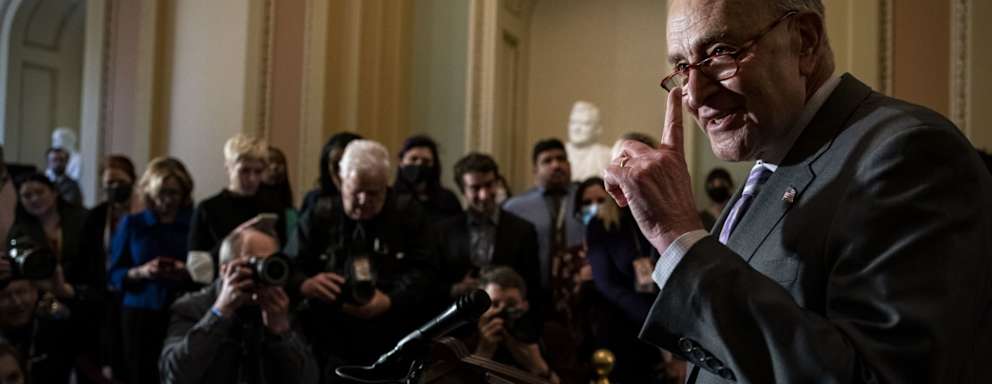Congress Increases Pell Grant Financial Aid for College Students
 Credit: Bloomberg / Contributor / Bloomberg / Getty Images
Credit: Bloomberg / Contributor / Bloomberg / Getty Images- Pell Grants help nearly 7 million students afford college each year.
- This federal aid applies to both low- and middle-income students.
- The increase is not as much as President Biden proposed in his Build Back Better plan.
Congress increased both the maximum and minimum Pell Grant award in its omnibus spending bill.
The U.S. House of Representatives and Senate passed a spending bill last week that includes a $400 increase in the maximum Pell Grant. This boosts the maximum aid per student for the 2022-2023 academic year from $6,495 to $6,895, a 6.2% increase. Congress’ increase also brings the minimum award from $650 to $690.
President Joe Biden signed the bill into law Friday.
Pell Grants are federal financial aid grants given to low- and middle-income students. The Department of Education (ED) awards these grants using expected family contributions calculated through the Free Application for Federal Student Aid (FAFSA).
Nearly 7 million students benefit from Pell Grants each year.
Mamie Voight, CEO of the Institute for Higher Education Policy, said in a statement that this is the largest year-to-year increase in 10 years.
“Unfortunately, the purchasing power of this foundational federal financial aid program has failed to keep pace with the rising cost of college; while the award once covered more than half the costs at a public four-year college, it now covers less than one-third,” she said. “The $400 increase is an important step towards restoring this purchasing power.”
While many advocacy groups and higher education organizations applauded the increase, many continue to press this administration to double the Pell Grant award.
While many advocacy groups and higher education organizations applauded the increase, many continue to press this administration to double the Pell Grant award.
That includes Justin Draeger, CEO of the National Association of Student Financial Aid Administrators.
“It is … encouraging to see Congress commit to increasing funding for this indispensable student aid program, which helps millions of students each year access postsecondary education,” Draeger said in a statement. “Still, we continue to urge lawmakers to work toward doubling the maximum Pell Grant, restore its purchasing power for low- and moderate-income students, and make up for decades of deferred investment.”
This $400 Pell Grant increase also falls short of what Biden proposed in his Build Back Better plan, which failed to pass Congress last year and may be dead in the water. Build Back Better would have increased the max award by $550 to $7,045, an 8.5% increase.
Department of Education Secretary Miguel Cardona called the $400 increase Biden’s “down payment” along his way to double the max award.
Congress’ spending bill would increase the Pell Grant for more students than Biden’s initial plan.
Biden’s Build Back Better proposal would only have increased the maximum award for students attending nonprofit colleges and universities, much to the dismay of advocacy groups representing for-profit institutions. The spending bill, however, increases the award for all students who qualify for it.
Career Education Colleges and Universities, which represents for-profits, applauded the move.
“This bipartisan increase to the maximum Pell Grant award will help millions of low-income students pursue their education and career goals, including approximately 900,000 Pell Grant recipients attending a for-profit school,” the organization’s president and CEO, Jason Altmire, said in a statement. “We are pleased to see that this increase ensures student equity by being available to all students in all sectors of higher education.”
The House of Representatives also recently passed Pell Grant expansion to allow students in job-training programs to qualify for the grant. A Democratic lawmaker tacked on this expansion as an amendment to the America COMPETES Act in mid-February.
However, the Senate must still approve this language and send it to the president’s desk.